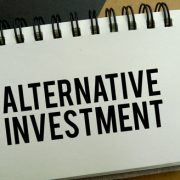How To Supercharge Your Self-Directed IRA
Time Magazine takes a look at the retirement savings habits of Americans here. Among the key findings of interest to Self-Directed IRA owners? “A 15 percent savings rate may not be enough. Laurence Siegel, Director of Research at the CFA Institute Research Foundation, suggests that if investors want to lay any kind of reliable foundation for retirement income security, their savings need to be on the order of 20, 25, or even 30 percent.
The problem: Only about 13 percent of Americans are saving 20 percent of their income or more, according to Time’s research. In fact, a survey from Fidelity Investments found that the average retirement savings rate, as a percentage of income, is 8.2 percent.
Unless the investor is getting some substantially above-market returns, that’s not enough to replace the bulk of a Self-Directed IRA owner’s pre-retirement income, on an inflation-adjusted basis. Returns on investment are much lower than they were a generation or two ago, thanks to stubbornly low interest rates, low dividends on U.S. stocks, and elevated valuations. To be sure, the self-directed IRA owner has an advantage, thanks to nimbleness, an ability to invest almost anywhere, and the capacity to use more leverage executing real estate or other strategies within a self-directed IRA than the run-of-the-mill investor does.
Start Loading Up Your Self-Directed IRA Early
Time’s reporters looked at people who were able to set aside unusually large percentages of their current income – especially when adjusted for age. The aim was to find out what characteristics they share and what techniques they use that would be of interest to other savers. Here’s what they found:
Successful savers generally automate their savings. That is, they set up automatic withdrawal or payroll deduction plans to direct savings out of their pockets and into retirement accounts. In many cases they don’t even see that money. It’s gone, safely ensconced in their retirement accounts and out of easy reach before they even get a chance to spend it.
What’s more, they don’t just put their savings on autopilot – they put the increases in their savings on autopilot, as well. Many of the people they found had built in automatic increases of 1 to 3 percent in their retirement savings contributions.
So they took temptation out of the picture. Their contributions just happen, without the need for further intervention on their part.
Many of the savers they interviewed were millennials – a demographic that’s quite accustomed to technology. But it doesn’t hurt when employers support them and even foment a culture of super-saving with the use of employer matches, automated enrollment, and defaults other than money market investments.
What can Self-Directed IRA investors do?
As a self-directed retirement strategy enthusiast, the best thing you can do is concentrate on the basics: Save early, save often, diversify and manage your investments while remaining cognizant of your risk-adjusted returns and the minimum acceptable expected returns.
You can also automate your contributions, which does two things – it takes the natural tendency to spend available cash, rather than invest it, out of the picture. It also prevents you from becoming too risk averse during poor markets, and too aggressive during hot markets. Warren Buffett famously advised, “Be fearful when others are greedy, and greedy when others are fearful.” But most of us have a human tendency to do precisely the opposite.
Automating your investments and taking advantage of dollar cost averaging can help mitigate this natural tendency that afflicts nearly everyone who doesn’t have ice water flowing in his veins!
If you’re interested in leveraging a Self-Directed IRA strategy – or if you’re an entrepreneurially-minded individual or have a track record of business, real estate or investing success, and you would like to harness the tremendous tax advantages of the IRA and other retirement accounts to help supercharge your IRA and potentially achieve greater diversification, higher potential returns and/or lower risk, we want to work with you.
With offices in beautiful Asheville, North Carolina and Charlotte, North Carolina, American IRA, LLC has a long track record of helping investors just like you do just that.
For a free consultation, call us today at 866-7500-IRA(472), or visit us online at www.americanira.com.





